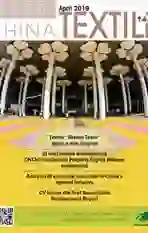Financial support is indispensable for the healthy development of textile enterprises
2019-06-13
In recent years, in order to solve the problem of high cost and heavy burden of bridge financing for small and micro enterprises, the regulatory authorities have adopted a series of policies precisely. However, the outstanding problems such as the pressure of repayment caused by “repayment before loan” still exist.
On March 10th, at a press conference held at the Second Session of the Thirteenth National Peoples Congress in Medea Center, Yi Gang, president of the Peoples Bank of China, Chen Yulu, vice-president of the Peoples Bank of China, Pan Gongsheng, director of the State Administration of Foreign Exchange and vice-president of the Peoples Bank of China, responded a series of problems, such as the difficulty of enterprise financing. The specific measures include increasing loan investment, developing bond financing, establishing supporting tools for private enterprise equity financing, stabilizing and promoting equity financing of private enterprises and so on.
Yi Gang said that “the connotation of sound monetary policy has not changed, but its structure will be more optimized and support for small and micro enterprises and private enterprises will be further strengthened.” Yi Gang said that in the financing cost that small and micro enterprises and private enterprises actually feel, especially in the loan interest rate, besides the risk-free interest rate, it is mainly caused by the high risk premium, so the real interest rate of loans is higher, mainly how to solve the problem of high risk premium.
“There are two main ways to solve this problem,”he said. “The first way is to reform interest rate marketization. We should eliminate some monopolistic factors in the process of interest rate decision through reform, make risk pricing more accurately, and reduce risk premium through more adequate competition. The second way is supply-side structural reform. It can improve the transparency of information, improve the bankruptcy system, improve the efficiency of law enforcement, and reduce the rate. These supply-side structural reforms can reduce the actual transaction costs, but also reduce the risk premium. So we will work very hard to reform to reduce real interest rates.”
Speaking of solving the problem of information asymmetry at the micro level of financial market, Chen Yulu said that the current credit information system in China is a “government + market” two-wheel-driven development model. The government-driven aspect is mainly the National Credit Information Base Database. In the market-driven aspect, there are 125 enterprises credit information institutions in the market. More than 80% of the 97 credit rating agencies are invested by private capital. Chen Yulu hopes that market-oriented credit reporting institutions can rapidly improve their innovation and competitiveness, and make the market credit reporting service stronger.
Pan Gongsheng said that in the process of supporting small and micro enterprises and private enterprises in financing, we should pay attention to market rules, adhere to precise support, select private enterprises which are in line with the direction of national industrial development and whose main industries are relatively concentrated in the real economy, advanced technology, market-oriented products and temporarily encounter difficulties to give priority to support, prevent blind support, surprise lending, enhance the ability to prevent and control future financial risks.
杂志排行
China Textile的其它文章
- An innovation driving the industrial chain with design
- Lenzing Group achieves fourth best full-year results in its history
- Rieter Group:Financial Year 2018
- Analysis of economic operation of China’s apparel industry
- CNTAC Intellectual Property Rights Alliance established
- Belt and Road Investment Promotion Seminar Egypt and ASEAN Textile Parks held successfully in Shanghai
